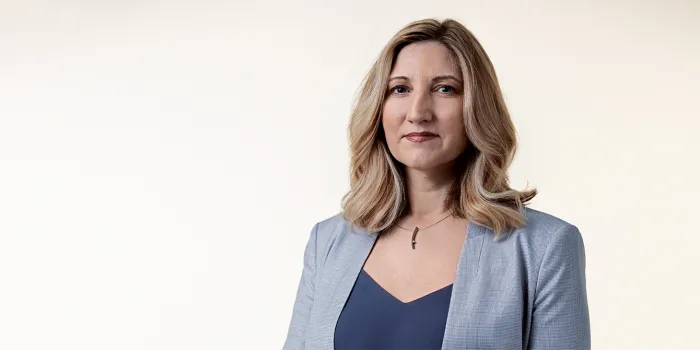Danielle Nance was in fifth grade when she decided to become a physician. A bookshelf in her classroom was filled with first-aid manuals, and she couldn’t wait to read them. She asked her teacher when the first-aid unit would be.
There wasn’t one, the teacher explained. The books were just left over, and decades old. Disappointed, Nance asked if she could take them home. “I plowed through these little manuals and loved it,” she says. “I remember deciding I wanted to be a doctor then.”
Today, Danielle Nance, MD, is an attending hematologist at Banner MD Anderson Cancer Center in Gilbert, Arizona.
Nance was diagnosed with moderate hemophilia A at age 2, after a joint bleed in her knee. Until then, her constant bruises and oozing cuts were a mystery. Her parents were even investigated by child protective services. “When I showed up with a joint bleed,” she says, “they looked at my bleeding symptoms differently.”
Nance grew up in California and Utah and now lives in Scottsdale, Arizona, with her husband and their blended family of seven children. Her teenage son has hemophilia A as well.
Hematology Was a Natural Focus
Realizing she wanted to be a doctor and choosing her specialty were one and the same decision. “When I wanted to become a physician, I wanted to become a hematologist,” Nance says.
A major motivator to join the specialty was to prevent others from having the negative experiences she’d had. “I encountered doubt and resistance from some providers when I was younger,” Nance explains. Some would insist she had von Willebrand disease. “Or they would tell me I was a carrier of hemophilia and therefore I couldn’t be a bleeder.”
“There was a lot of incomplete information when I was growing up,” Nance says. “We have so much more knowledge now.”
One of Nance’s research interests is how bleeding disorders affect women. She has found that different mutations, in addition to factor level, affect bleeding symptoms. “The factor level in a woman does not predict whether or not she is going to bleed, or how long she’s going to bleed for after an injury,” Nance says.
She has found that a factor level of 20% may cause no bleeding in one female patient and bleeding several times a month in another—even between women in the same family.
A Provider and a Patient
Naturally, her life with hemophilia gives Nance insight into her patients’ needs and struggles.
“I have been there,” she says. “I just approach each patient in the way of knowing how I felt and the questions I had and the things that I was reluctant to ask.”
Overall, Nance aims to treat patients the way she would want to be treated. She addresses their immediate needs and concerns. Most important, she educates them about available treatments, without forcing them in any direction. “It’s really up to each individual to choose how they’re going to live their life,” she says.
The healthcare field is demanding, Nance admits, but she is glad she heeded the call. “Taking what I thought was my biggest weakness and using that as a strength and a gift that I can share with others has been one of the great joys in my life.”

